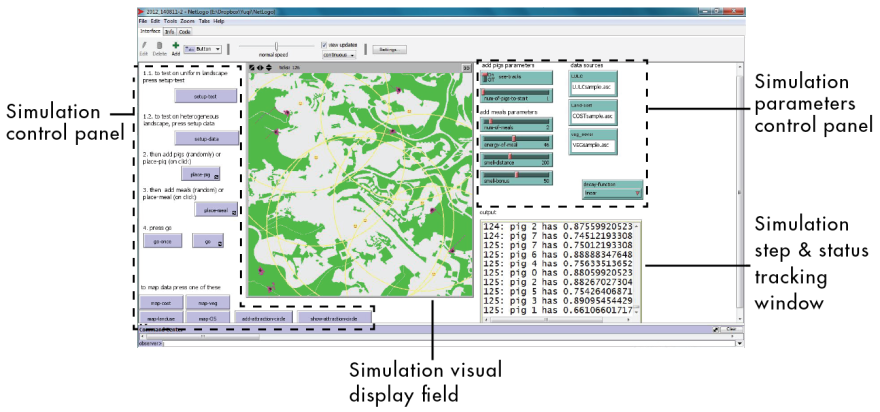AGENT-BASED SIMULATION OF LANDSCAPE TYPOLOGY AND WILDLIFE MOVEMENT PATTERNS
SUMMER 2014 / HAIFA, ISRAEL

This research aims to explain the presence and behavior of wildlife in urban area and the implications for urban ecosystem, biodiversity and planning decisions. Located in northern Israel, situated on the slopes of Mount Carmel and overlooking the Mediterranean Sea, the city of Haifa has a variety of semi-natural and artificial areas. Evidence from existing research and from observations in Haifa imply that wild boars typically inhabit maquis and grassy open areas but ventures into residential neighborhoods to forage for food. Their foraging movement is likely to include both built areas (residential backyards, gardens, footpaths, garbage sites etc.) and vegetated open spaces on a daily basis. Through the Netlogo platform, this project built an agent-based simulation model to represent the heterogeneous landscape in Haifa and to derive the movement routes under the influence of landscape factors.